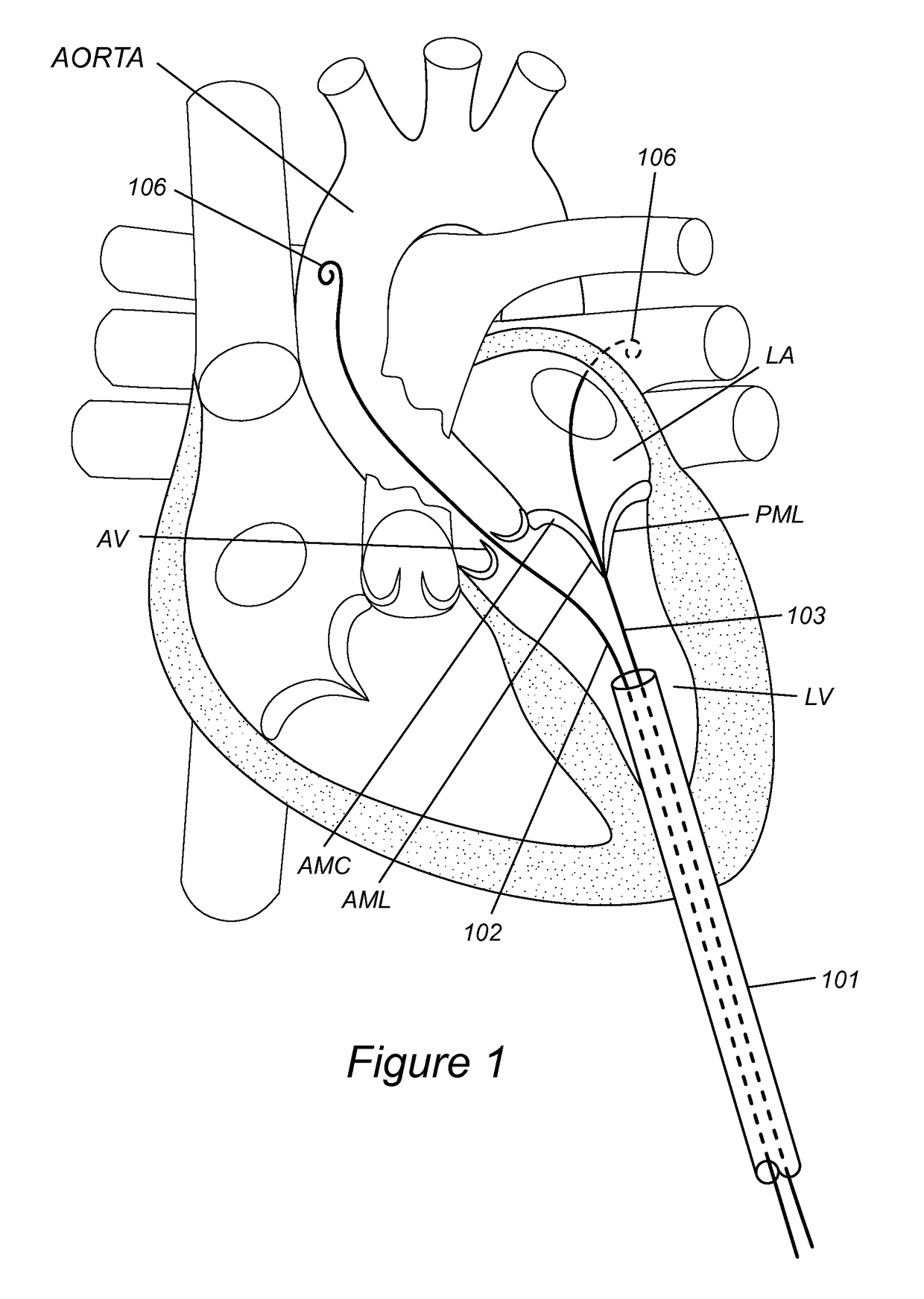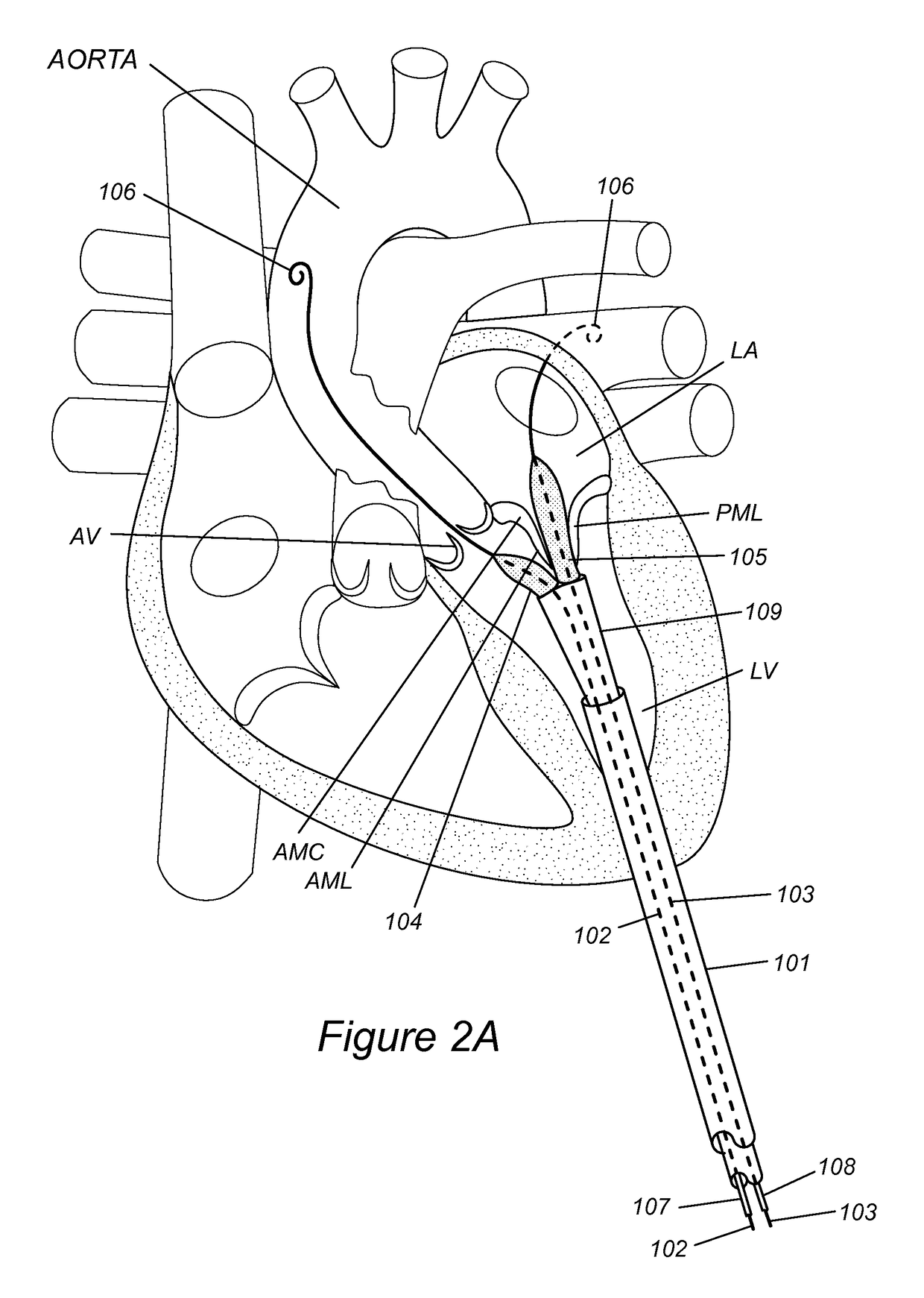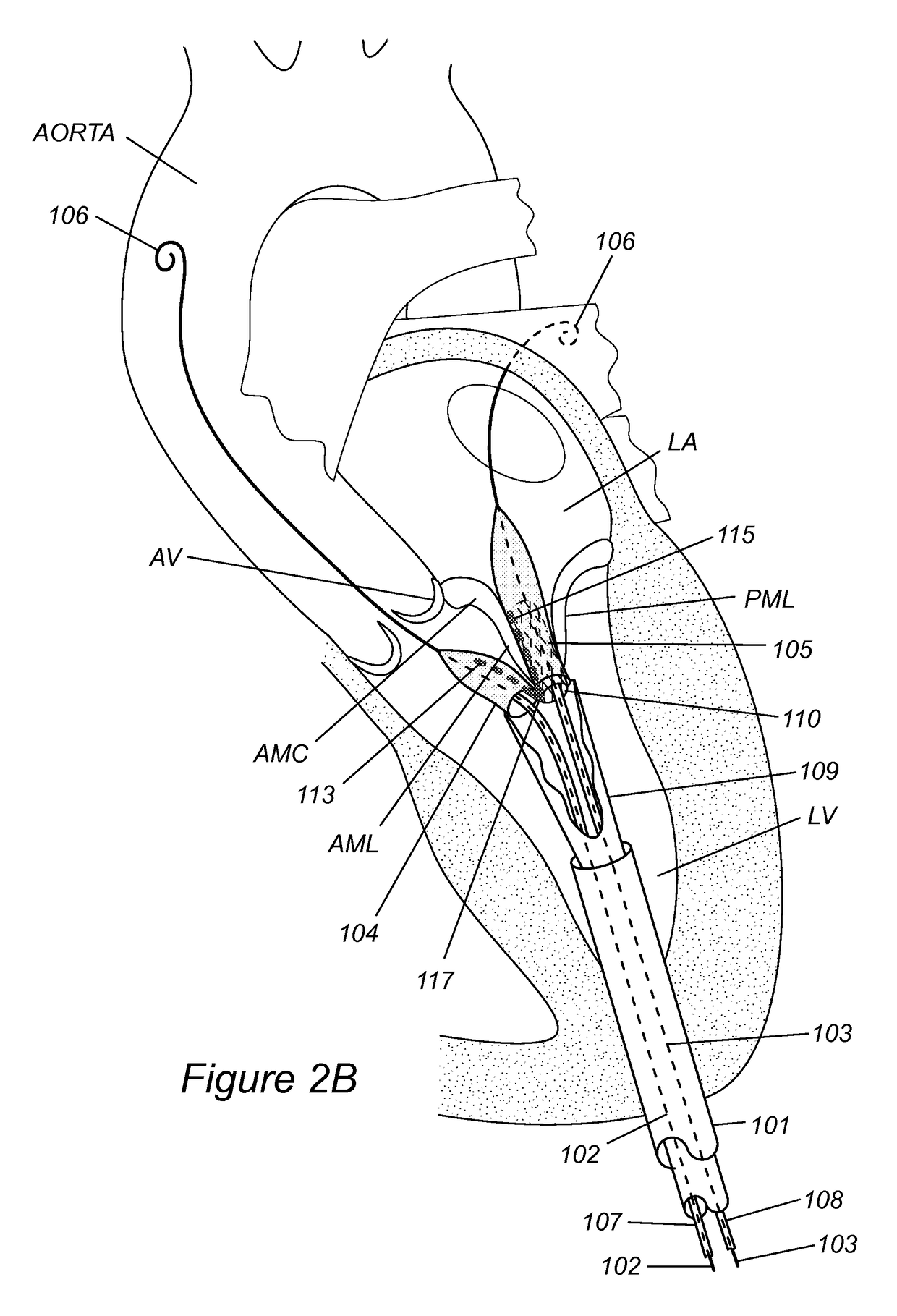Anatomically-orientated and self-positioning transcatheter mitral valve
a transcatheter mitral valve, anatomically-oriented technology, applied in the field of anatomically-oriented and self-positioning transcatheter mitral valve, can solve the problems of reducing the optimization of flow through the mitral valve, aortic valve, other cardiac structures, and not automatically conforming to the natural geometry,
- Summary
- Abstract
- Description
- Claims
- Application Information
AI Technical Summary
Benefits of technology
Problems solved by technology
Method used
Image
Examples
example 1
Surgical Procedure
[0047]After induction of anesthesia, and sterile preparation, an incision is performed at the 5th intercostal space in the mid-clavicular line, cutting the intercostal muscles, and entering the left pleural cavity. Next, the pericardium over the left ventricular apex is opened, and four pledgeted sutures are placed at the site of entry. Next an 18 gauge needle and 0.035″ regular J-wire is inserted and advanced through the aortic valve. The needle is withdrawn and a 7 Fr sheath is used to cross the aortic valve over the wire and used to exchange out for a stiffer 0.035″ wire (Amplatzer Extra Stiff J-wire or equivalent). The 24 Fr sheath is inserted into the left ventricle over this wire. The subject is heparinized with an activated clotting time (ACT) over 250 sec.
[0048]A 0.035″ regular J-wire is inserted with a 6 Fr JR4 catheter and advanced through the apical sheath alongside the first wire and from the left ventricle, across the mitral valve and into the right up...
PUM
 Login to View More
Login to View More Abstract
Description
Claims
Application Information
 Login to View More
Login to View More - R&D
- Intellectual Property
- Life Sciences
- Materials
- Tech Scout
- Unparalleled Data Quality
- Higher Quality Content
- 60% Fewer Hallucinations
Browse by: Latest US Patents, China's latest patents, Technical Efficacy Thesaurus, Application Domain, Technology Topic, Popular Technical Reports.
© 2025 PatSnap. All rights reserved.Legal|Privacy policy|Modern Slavery Act Transparency Statement|Sitemap|About US| Contact US: help@patsnap.com



